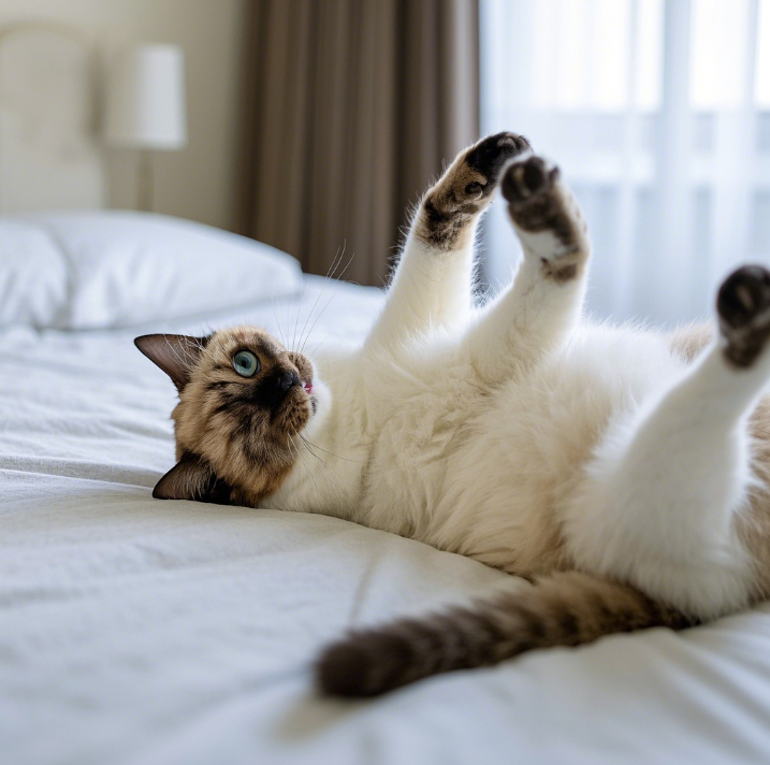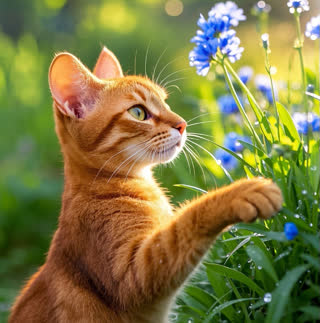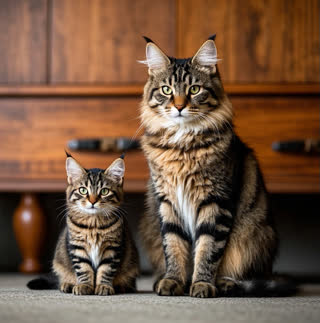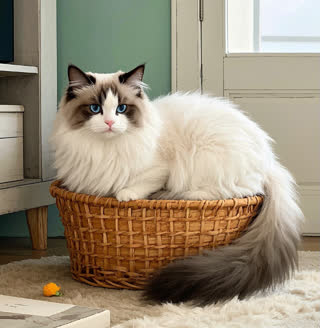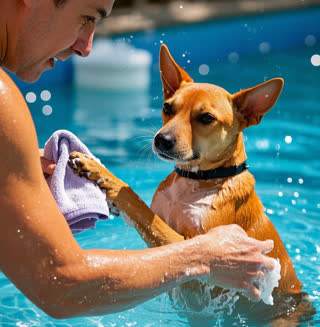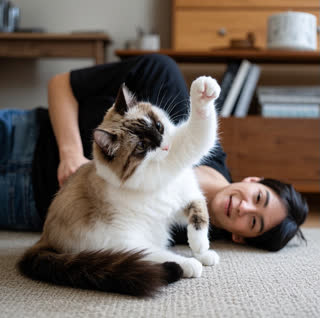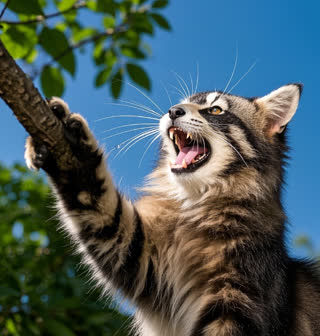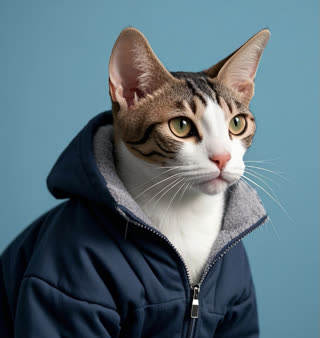The snowshoe cat breed is a captivating hybrid of Siamese and American Shorthair ancestry, celebrated for its striking white paws, vivid blue eyes, and uniquely sociable nature. Originating in the 1960s, these cats have become beloved companions for families across the U.S. due to their snowshoe cat personality traits—a harmonious blend of loyalty, curiosity, and playful energy. In this comprehensive guide, we’ll explore their behavioral nuances, care requirements, and why they’re the perfect addition to any household seeking an interactive, family-friendly pet.
1. The Snowshoe Cat Breed: Origins and Distinctive Features
The snowshoe cat breed emerged from a chance discovery by breeder Dorothy Hinds-Daugherty, who noticed three Siamese kittens with unusual white paws in her litter . These kittens were later crossed with American Shorthairs to refine their markings and temperament, resulting in a breed that combines the Siamese’s vocal charisma with the American Shorthair’s easygoing demeanor. Today, Snowshoes are recognized for:
Colorpoint Coat: A light body with darker points (ears, face, legs, and tail) in seal, blue, chocolate, or lilac.
Snowshoe Markings: Four white paws that inspired their name, along with a "V-shaped" white marking on the face.
Muscular Build: A medium-to-large frame ideal for climbing and play.
Their appearance mirrors their snowshoe cat personality traits—a balance of elegance and warmth that makes them irresistible to cat lovers.
2. Core Personality Traits of Snowshoe Cats
Snowshoe cats are renowned for their outgoing and affectionate nature. Here’s a breakdown of their key traits:
a. Affectionate and Loyal
Snowshoes form deep bonds with their human companions and thrive on attention. They often follow their owners around the house, seeking cuddles and companionship. Unlike more independent breeds, they dislike being left alone for long periods and may develop separation anxiety if neglected .
b. Sociable and Playful
These cats are natural entertainers, known for their playful antics and love of interactive games. They enjoy fetching toys, solving puzzles, and even walking on a leash . Their high energy levels make them excellent companions for active households, including those with children.
c. Intelligent and Curious
Snowshoes are quick learners and thrive on mental stimulation. They can be trained to perform tricks, open doors, or use a toilet . Their curiosity often leads them to explore every corner of their environment, so providing climbing structures and hiding spots is essential.
d. Vocal and Expressive
While not as talkative as Siamese cats, Snowshoes have a soft, melodic voice and use it to communicate their needs. They’ll "chat" with you during playtime or meow gently to request attention .
e. Adaptable and Pet-Friendly
Snowshoes get along well with other pets, including dogs and cats, thanks to their friendly and non-confrontational nature. They’re also patient with children, making them an ideal family pet .
3. Snowshoe Cat Care: Nurturing Their Unique Needs
To ensure your Snowshoe cat thrives, consider these care tips:
a. Diet and Nutrition
Feed your Snowshoe a balanced diet rich in protein to support their active lifestyle. Monitor their calorie intake to prevent obesity, as they’re prone to weight gain .
b. Grooming
Their short, dense coat requires minimal grooming—weekly brushing to reduce shedding and occasional nail trims. Regular dental care is also crucial to prevent periodontal disease .
c. Exercise and Mental Stimulation
Provide interactive toys, scratching posts, and climbing trees to keep them physically and mentally engaged. Snowshoes also enjoy water play, so consider a shallow pool or a running faucet for enrichment .
d. Health Considerations
While generally healthy, Snowshoes may be prone to:
Hypertrophic Cardiomyopathy (HCM): A genetic heart condition requiring regular veterinary checkups.
Pica: A tendency to eat non-food items, which can be managed with environmental enrichment and supervision .
4. Living with a Snowshoe Cat: Tips for a Harmonious Home
a. Apartment-Friendly
Snowshoes adapt well to apartment living as long as they receive enough exercise and mental stimulation. A cat tree or window perch will satisfy their climbing instincts.
b. Multi-Pet Households
Their sociable nature makes them compatible with other pets. Introduce new animals gradually and provide separate feeding stations to avoid conflicts.
c. Training and Behavior
Use positive reinforcement to train your Snowshoe. Reward good behavior with treats or praise, and redirect unwanted habits like scratching furniture to appropriate surfaces .
5. Common Misconceptions About Snowshoe Cats
a. "They’re Just Siamese Cats with White Paws"
While Snowshoes share ancestry with Siamese cats, their American Shorthair genes give them a more laid-back personality and robust build.
b. "They Require High Maintenance"
Their grooming needs are minimal, and their adaptable nature makes them suitable for busy households.
c. "They’re Hypoallergenic"
Despite their short coat, Snowshoes produce normal levels of allergens and aren’t hypoallergenic .
6. Conclusion: Why Snowshoe Cats Make Exceptional Companions
The snowshoe cat breed is a delightful blend of beauty, intelligence, and warmth. Their affectionate personalities, playful antics, and adaptability make them perfect for families, singles, and seniors alike. By understanding their unique needs and providing a loving environment, you’ll enjoy a lifetime of companionship with these extraordinary felines.
Key Takeaways:
Personality: Affectionate, sociable, intelligent, and playful.
Care: Regular grooming, balanced diet, and mental stimulation.
Health: Monitor for HCM and pica; schedule routine vet visits.
If you’re considering adding a Snowshoe cat to your family, their charm and companionship will undoubtedly enrich your life.
